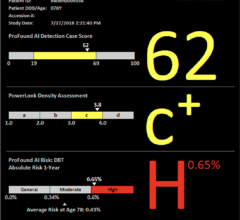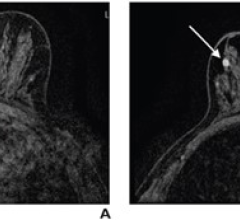
March 3, 2009 - Breast-Specific Gamma Imaging (BSGI) has been proven to be a highly sensitive imaging technique for the diagnosis of invasive lobular carcinoma (ILC), a type of breast cancer that begins in the milk-producing glands (lobules) and then spreads to the surrounding breast tissues, according to a study published in the February 2009 issue of “American Journal of Roentgenology.”
The study found BSGI provides better sensitivity for detecting ILC than mammography, ultrasound and magnetic resonance imaging (MRI). BSGI, performed with the Dilon 6800 Gamma Camera, is a molecular breast imaging technique that can see lesions independent of tissue density and discover very early stage cancers.
"The study is significant because ILC can often be difficult to detect mammographically and is often not palpable at clinical examination,” said Rachel Brem, M.D., director of breast imaging and intervention at George Washington University Medical Center in Washington, DC and vice chair of the department of radiology. “BSGI offers improved detection of this form of breast cancer that impacts approximately 10 percent of new breast cancer patients every year.”
Brem and her colleagues conducted a retrospective multicenter study of women with biopsy-proven ILC. All patients had undergone mammography and BSGI, and the imaging findings were classified as positive or negative for invasive lobular carcinoma by experienced breast imagers. Ultrasound and MRI results, if performed, were included for analysis. The sensitivity of mammography, ultrasound, MRI and BSGI was determined for each modality and compared. Twenty-six women, ages 46 to 82 (mean age of 62.8), with 28 biopsy proven pure ILC, mean size of 22.3 mm (2 mm – 90 mm), were included.
The study concludes that BSGI had the greatest sensitivity for the detection of ILC with a sensitivity of 93 percent. Mammography, ultrasound and MRI demonstrated sensitivities of 79 percent, 68 percent and 83 percent, respectively.
For more information: www.dilon.com


 July 17, 2024
July 17, 2024 








